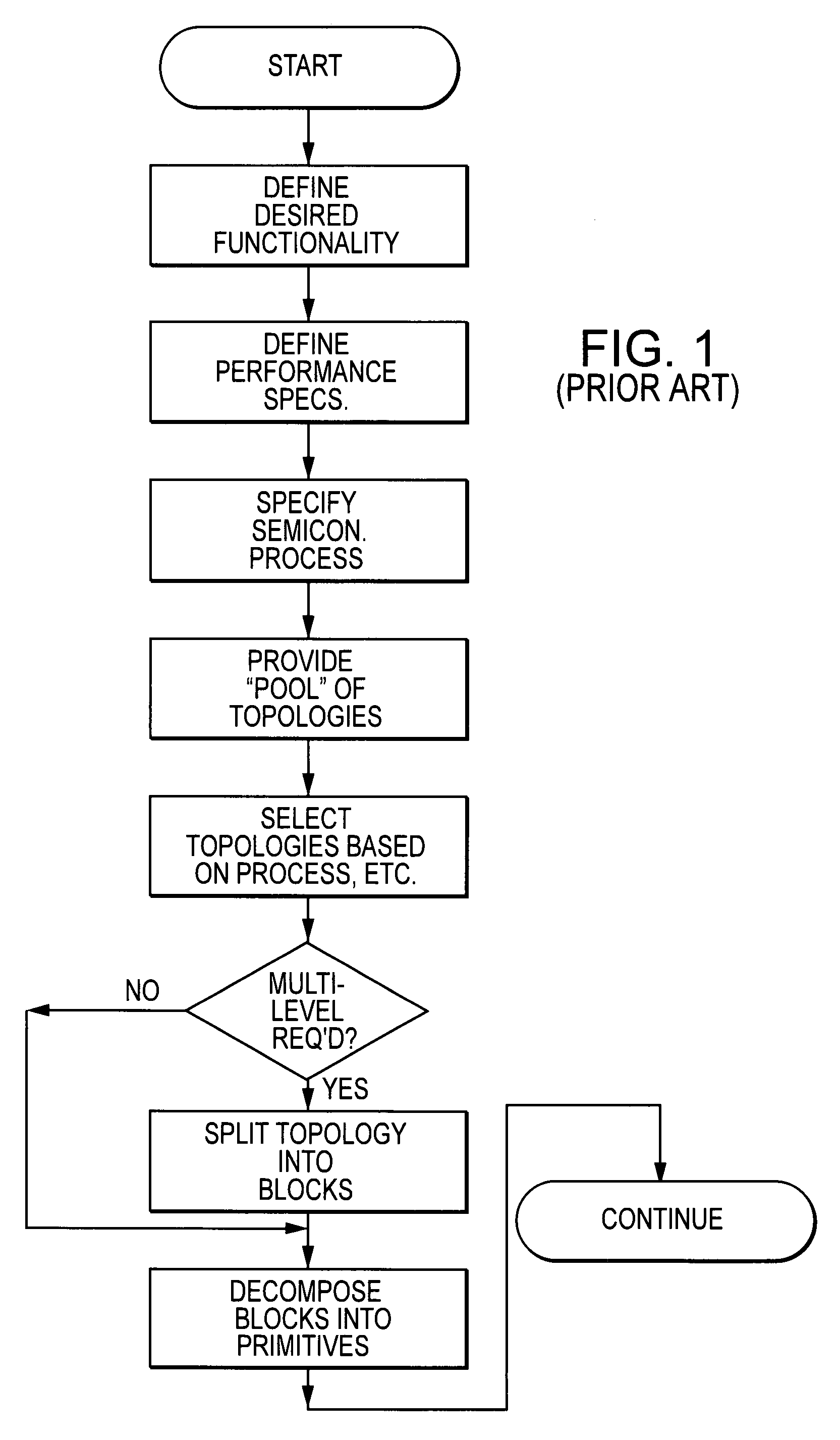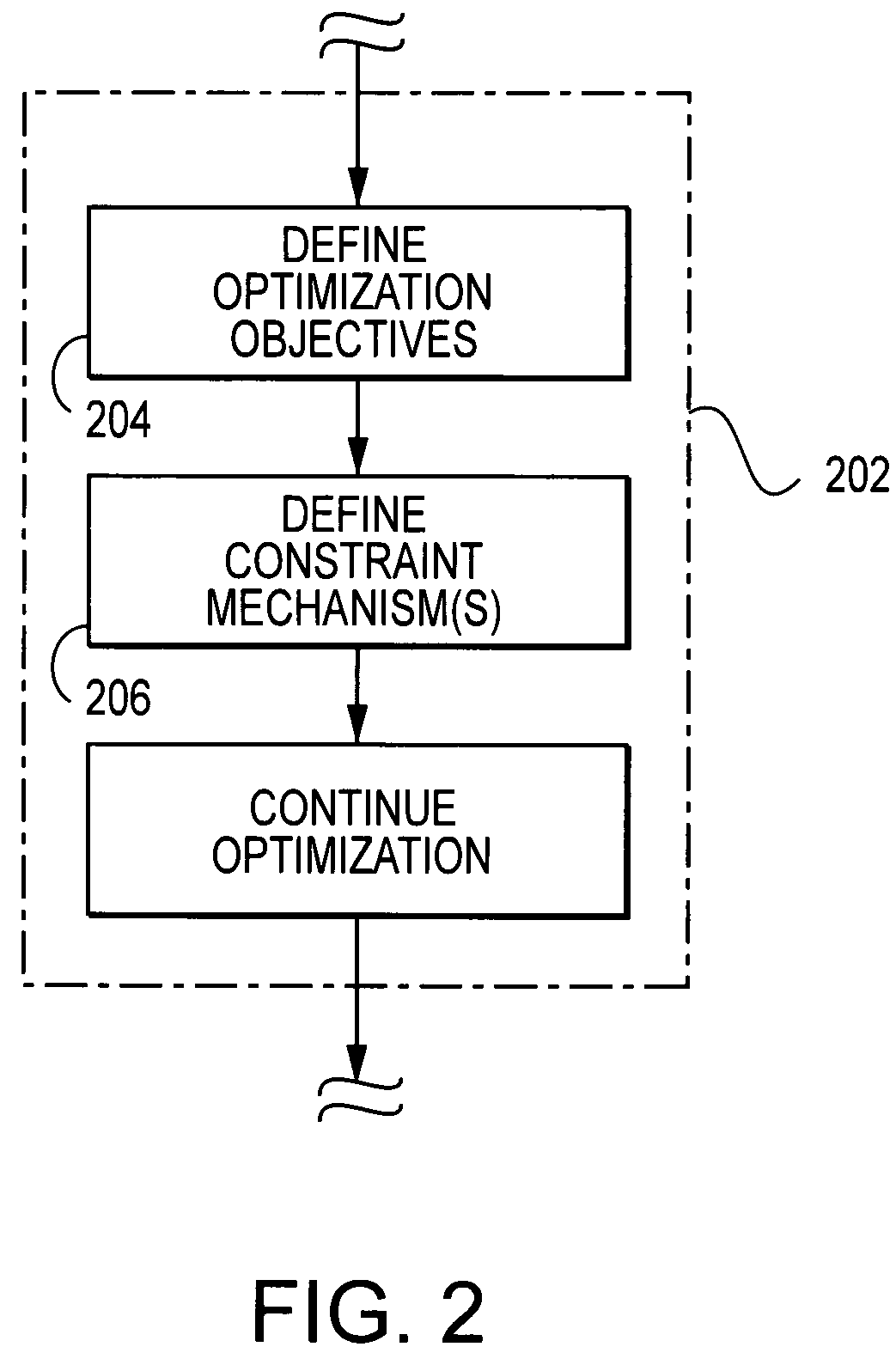Method and apparatus for designing electronic circuits using optimization
a technology of optimization and electronic circuits, applied in multi-objective optimisation, instruments, biological models, etc., can solve the problems of long design cycle, waste of power and area, and general degradation of nominal values of performan
- Summary
- Abstract
- Description
- Claims
- Application Information
AI Technical Summary
Benefits of technology
Problems solved by technology
Method used
Image
Examples
Embodiment Construction
[0043]Reference is now made to the drawings wherein like numerals refer to like parts throughout.
[0044]As used herein, the term “analog—mixed circuit design” or “AMS design” is meant to include any activity, human or automated, relating to the design, testing, verification, or evaluation of an electronic circuit. Such designs may relate, for example, to those comprising an integrated circuit.
[0045]As used herein, the term “integrated circuit (IC)” refers to any type of device having any level of integration (including without limitation ULSI, VLSI, and LSI) and irrespective of process or base materials (including, without limitation Si, SiGe, CMOS and GAs). ICs may include, for example, memory devices (e.g., DRAM, SRAM, DDRAM, EEPROM / Flash, ROM), digital processors, SoC devices, FPGAs, ASICs, ADCs, DACs, transceivers, amplifiers, resonators, modulators, and other devices, as well as any combinations thereof.
[0046]As used herein, the term “digital processor” is meant generally to inc...
PUM
 Login to View More
Login to View More Abstract
Description
Claims
Application Information
 Login to View More
Login to View More - R&D
- Intellectual Property
- Life Sciences
- Materials
- Tech Scout
- Unparalleled Data Quality
- Higher Quality Content
- 60% Fewer Hallucinations
Browse by: Latest US Patents, China's latest patents, Technical Efficacy Thesaurus, Application Domain, Technology Topic, Popular Technical Reports.
© 2025 PatSnap. All rights reserved.Legal|Privacy policy|Modern Slavery Act Transparency Statement|Sitemap|About US| Contact US: help@patsnap.com



